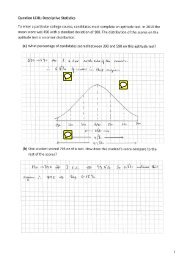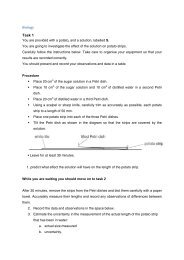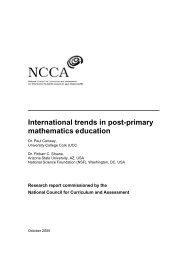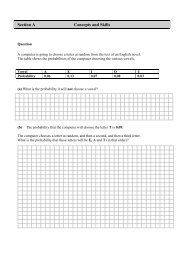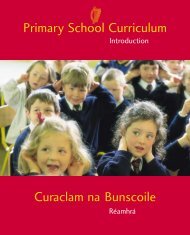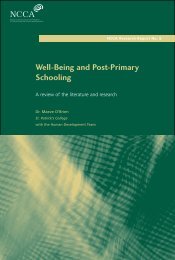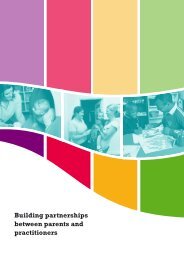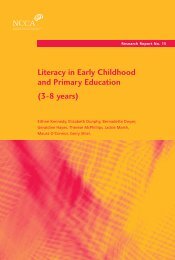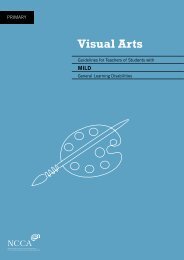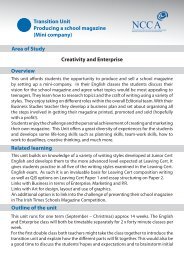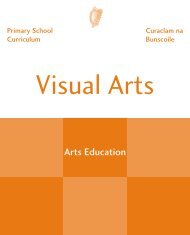Up and Away - National Council for Curriculum and Assessment
Up and Away - National Council for Curriculum and Assessment
Up and Away - National Council for Curriculum and Assessment
You also want an ePaper? Increase the reach of your titles
YUMPU automatically turns print PDFs into web optimized ePapers that Google loves.
Strategy 4 – Predicting<br />
Section 5 Examples of classroom activities<br />
Introduction<br />
Asking pupils to predict the contents of a text is an excellent strategy to prepare them <strong>for</strong> reading.<br />
Discussing what they think the text is about not only generates interest <strong>and</strong> existing knowledge, but also<br />
motivates pupils into wanting to read the text. Quite simply they want to know if their predictions were<br />
correct. In this sense predicting helps establish a personal connection with the text.<br />
Level of text<br />
Third class.<br />
Level of learner<br />
A1 <strong>and</strong> higher.<br />
Time<br />
40 minutes.<br />
Approach<br />
1. Design a worksheet containing a grid/table with column headings specific to the content of the text<br />
– see next page.<br />
2. If possible use visuals, in this case the first two pages of the story (above), to introduce the theme <strong>and</strong><br />
establish basic in<strong>for</strong>mation – in this example the names of the people, the relationships between<br />
them, where they are, what happens, etc.<br />
3. Replicate the grid on the board <strong>and</strong>, using the visuals, brainstorm ideas.<br />
Source material: Time Traveller 1. Roddy Day, Fionnuala Waldron,<br />
Tommy Maher & Pauric Travers (Reprint, 2002). CJ Fallon.<br />
4. In pairs/small groups pupils predict what the next part of the text is about – in this case they discuss<br />
how the story develops. Take feedback from all the pairs/groups.<br />
5. Pupils read the next part of the text to see if their predictions were correct – see note on next page*.<br />
6. H<strong>and</strong> out the worksheet. Pupils work with the text <strong>and</strong> complete the grid as required.<br />
7. Repeat the previous three stages with the next part of the text, establishing a cycle of predicting,<br />
reading, <strong>and</strong> categorising the vocabulary.<br />
179



